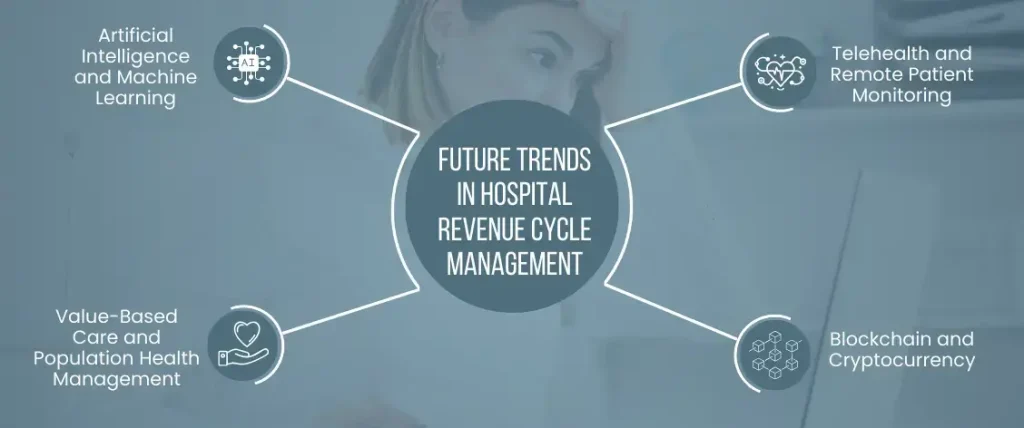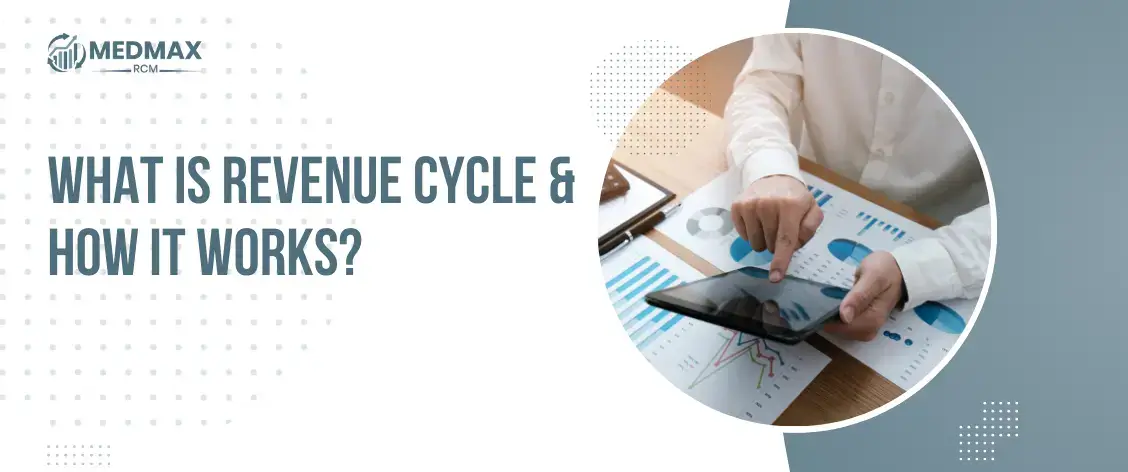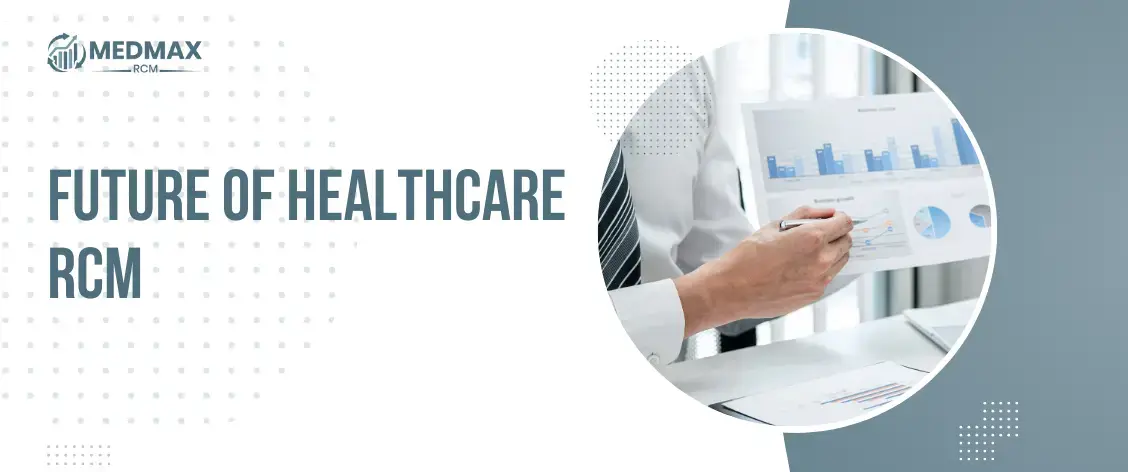
Everything About Hospital Revenue Cycle Management
What is Hospital Revenue Cycle Management? Hospital revenue cycle management (RCM) refers to the process of managing the financial aspects of a patient’s care from the time they schedule an appointment to the time their bill is paid in full. The goal of Hospital revenue cycle management is to optimize revenue and minimize the risk of financial losses for hospitals and healthcare providers. In order to achieve this, RCM involves a complex series of tasks and processes that are aimed at maximizing revenue and reducing expenses. Hospital revenue cycle management is a critical aspect of healthcare operations, and it requires a deep understanding of the financial, operational, and regulatory aspects of healthcare.
The revenue cycle in healthcare typically starts when a patient schedules an appointment and ends when the patient’s balance is paid in full. The key components of the revenue cycle include patient registration and scheduling, insurance verification and authorization, coding and charge capture, claims submission and management, payment posting and reconciliation, denial management and appeals, and patient collections and financial assistance.
Table of Contents
ToggleKey Components of Hospital Revenue Cycle Management
Patient Registration and Scheduling
The hospital revenue cycle management starts with patient registration and scheduling, which includes capturing patient demographic information and insurance information. Accurate patient registration and scheduling are critical to ensuring that claims are submitted accurately and in a timely manner.
Insurance Verification and Authorization
Prior to a patient’s appointment, hospitals and healthcare providers must verify their insurance coverage and obtain authorization for the services that will be provided. This step is critical to ensuring that claims are submitted to the correct payer and that the hospital is reimbursed for services provided.
Coding and Charge Capture
Once a patient’s appointment is complete, healthcare providers must document the services provided and assign the appropriate medical codes. This step is critical to ensure that claims are submitted with the correct codes and that the hospital is reimbursed for the services provided.
Claims Submission and Management
Once claims are coded and charged, they must be submitted to the appropriate payers for reimbursement. This step involves submitting claims electronically or via paper, tracking the status of claims, and resolving any issues or denials.
Payment Posting and Reconciliation
Once claims are paid, payments must be posted to the patient’s account and reconciled with the charges that were billed. This step ensures that the hospital is accurately reimbursed for services provided.
Denial Management and Appeals
Healthcare providers must be prepared to address claim denials and appeals in order to maximize revenue. This step involves analyzing denials, identifying root causes, and appealing denials when appropriate.
Patient Collections and Financial Assistance
Finally, hospitals must work to collect patient balances and offer financial assistance programs to those who cannot afford their healthcare bills. This step is critical to ensuring that the hospital is paid for services provided while also offering compassionate care to patients in need.
Common Challenges in Hospital Revenue Cycle Management
Hospital revenue cycle management can be a complex and challenging process. Some of the common challenges in hospital RCM include:
Billing and Coding Errors
Errors in billing and coding can lead to claim denials and delays, which can significantly impact revenue.
Insurance Denials and Delays
Insurance denials and delays can result in significant revenue losses and require time-consuming appeals processes.
Patient Payment Collection Issues
Collecting patient balances can be challenging, particularly for uninsured or underinsured patients.
Regulatory Compliance Challenges
Compliance with healthcare regulations can be complex and time-consuming, requiring ongoing training and education for staff.
Staff Training and Turnover
Staff training and education are critical to the success of hospital revenue cycle management, but high turnover rates can make it challenging to maintain a well-trained and knowledgeable staff.
Communication and Coordination Issues
Effective communication and coordination between departments and staff are critical to ensuring that the revenue cycle runs smoothly. However, communication breakdowns can lead to delays and errors.
Best Practices for Hospital Revenue Cycle Management
There are several best practices that hospitals can implement to improve their revenue cycle management processes and reduce the risk of financial losses. These include:
Train and Educate Staff
Ongoing training and education for staff are critical to ensuring that they understand the complex processes and regulations involved in hospital revenue cycle management. This can help reduce errors and improve efficiency.
Invest in Technology
Hospital revenue cycle management is becoming increasingly automated, and there are numerous software solutions available to help hospitals manage the revenue cycle more efficiently. Investing in the right technology can help reduce errors, improve accuracy, and streamline processes.
Analyze Data and Metrics
Regular analysis of revenue cycle data and metrics can help hospitals identify areas for improvement and monitor progress towards financial goals. This can also help hospitals identify and address issues that may be impacting revenue.
Monitor Claims and Denials
It is important to regularly monitor claims and denials to identify patterns and trends. This can help hospitals identify root causes of denials and implement strategies to reduce them.
Engage Patients
Engaging patients early in the hospital revenue cycle management can help improve collections and reduce bad debt. Hospitals can offer financial counseling and payment plans to help patients better manage their healthcare bills.
Maintain Compliance
Staying up-to-date on healthcare regulations and compliance requirements is critical to ensuring that the revenue cycle runs smoothly. This includes ongoing training and education for staff and regular audits to identify and address compliance issues.
Future Trends in Hospital Revenue Cycle Management
As healthcare continues to evolve, so too does the revenue cycle management process. Some of the key trends and innovations that are likely to impact hospital revenue cycle management in the coming years include:
Artificial Intelligence and Machine Learning
Artificial intelligence and machine learning are increasingly being used in healthcare to automate processes and improve accuracy. This includes the use of AI and machine learning in coding and charge capture, claims management, and denial management.
Telehealth and Remote Patient Monitoring
Telehealth and remote patient monitoring are becoming increasingly popular, particularly in light of the COVID-19 pandemic. These technologies can help reduce the need for in-person visits, which can help improve efficiency and reduce costs.
Value-Based Care and Population Health Management
The shift towards value-based care and population health management is likely to impact the revenue cycle management process. Hospitals will need to focus on prevention and patient engagement to improve outcomes and reduce costs.
Blockchain and Cryptocurrency
Blockchain and cryptocurrency are emerging technologies that have the potential to impact the hospital revenue cycle management process. Blockchain can help improve data security and transparency, while cryptocurrency can be used to facilitate payments and reduce transaction costs.
Conclusion
Hospital revenue cycle management is a critical aspect of healthcare operations, and it requires a deep understanding of the financial, operational, and regulatory aspects of healthcare. By implementing best practices and staying up-to-date on industry trends and innovations, hospitals can improve the efficiency and effectiveness of their hospital revenue cycle management processes. As healthcare continues to evolve, hospitals will need to be prepared to adapt and embrace new technologies and strategies to optimize revenue and minimize financial losses.

Emily Thompson
Emily Thompson is a Revenue Cycle Management (RCM) Specialist with extensive experience in the medical billing industry. She helps healthcare organizations and medical billing companies improve claim efficiency, reduce A/R backlogs, and implement data-driven RCM strategies. Emily’s articles focus on end-to-end medical billing services, denial prevention, and technology-driven revenue optimization for healthcare practices across the U.S.








